Stanley Kubrick 7: The Shining (1980)
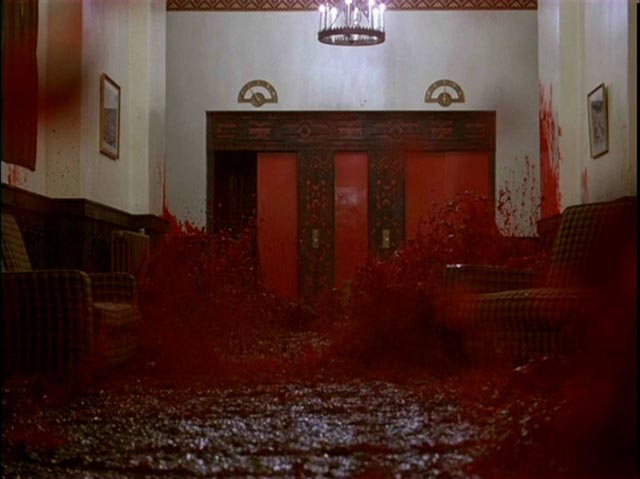
The first time I saw Stanley Kubrick’s adaptation of Stephen King’s third novel, The Shining, when it was released in 1980, I lined up for an hour to get into the Colony Theatre on opening night. Just as my friend and I were reaching the door, an usher came out counting heads; she dropped her arm just in front of me, saying “That’s it, sold out.” I must have looked pathetic – I know I whined – because she raised her arm and dropped it again behind us. I can imagine how pissed off the next people in line must have felt.
Because the theatre was packed, I ended up in the far right seat of the front row, watching those sweeping opening helicopter shots at an extreme, distorted angle. Maybe that was a large part of why I left the theatre more than two hours later feeling disappointed. But I don’t think so. I went to see it again soon after, and remained dissatisfied.
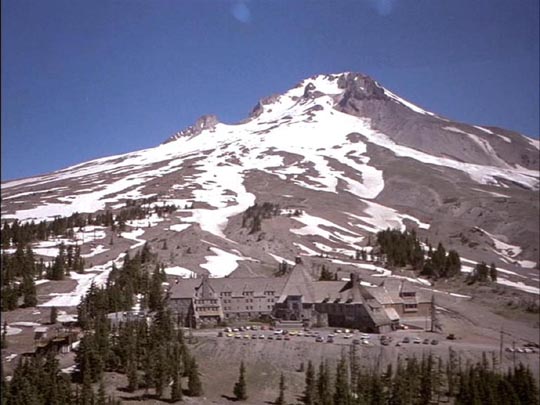
There is something undeniably compelling about The Shining, and each time I sit down to watch it (this latest viewing on Blu-ray is at least the sixth), I find it strangely hypnotic, its almost 2½ hours passing as quickly and smoothly as those Steadicam shots of Danny riding his trike around the corridors of the Overlook. And yet I always end up dissatisfied, even frustrated, because the film simply doesn’t work for me. Oh, there are countless individual moments of great power, but the overall conception fails … of course, I know this is an intensely subjective feeling; many viewers and critics revere the film.
So the questions are: what is the film’s failure, and how can it remain so compelling despite that failure?
Adaptation
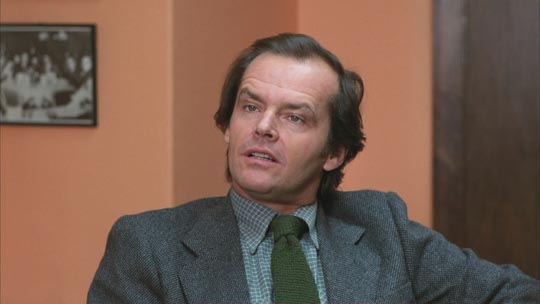
I’m not an adaptation purist. I don’t believe a filmmaker should be slavishly faithful to the source material because the printed word and the screen are two very different media, each with their own strengths and requirements. Changes are always necessary when transferring a story from one to the other. But issues arise with regard to why a filmmaker chooses a particular source and what he or she chooses to do with it. In the case of The Shining, not an obvious choice for someone like Kubrick, the novel was offered to him by Warner Brothers as he was dealing with the poor response to Barry Lyndon and the consequent failure to secure funding for his dream project about Napoleon. As had happened after the initially weak performance of 2001: A Space Odyssey, Kubrick was looking for something more commercial with a more manageable budget. The Shining seemed to offer that opportunity.
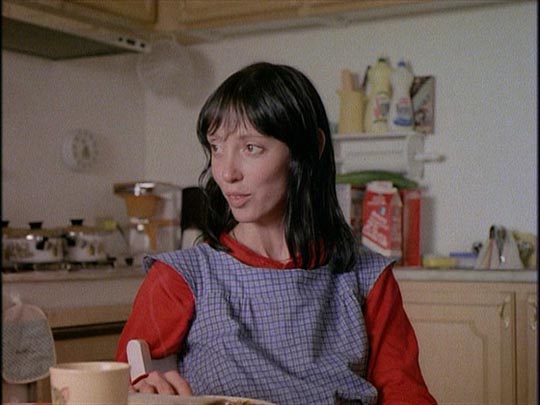
But King’s book, one of his best, is a full-blown haunted house story. The supernatural permeates it, the ghosts are real. As in Shirley Jackson’s classic The Haunting of Hill House (superbly transferred to film by Robert Wise in 1963 as The Haunting), the setting of King’s story, the Overlook Hotel in the remote mountains of Colorado, is a living entity which feeds off the people who inhabit it, inducing psychosis in the form of sexual perversion and violence. As the place closes every winter, it requires a caretaker who must live there in isolation and the owners prefer to hire family men. When former schoolteacher (and alcoholic in remission) Jack Torrance arrives for his interview, he’s informed that a previous caretaker, Grady, went nuts and slaughtered his family before killing himself. Jack insists the isolation won’t be a problem for him; in fact, he’s looking for seclusion to work on a novel.
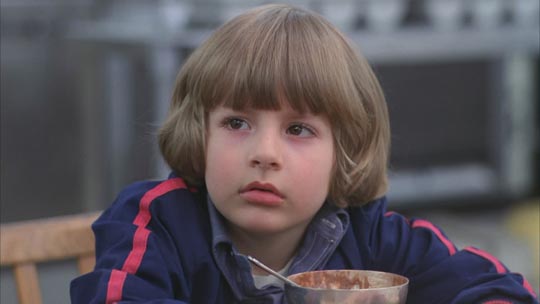
In the book, the hotel gradually takes control of Jack and turns him against his wife Wendy and son Danny. And after the accumulation of horrors, an intensely well-observed depiction of escalating familial abuse, Jack – like Eleanor in The Haunting – is absorbed into the building as a permanent new addition to its ghostly inhabitants (at least until the place goes up in flames after the boiler explodes).
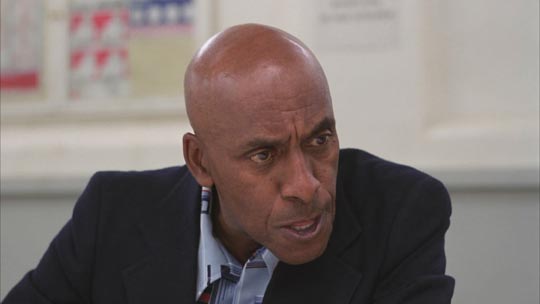
There are elements in the novel which would seem naturally to appeal to Kubrick, in particular the location itself, a vast building which dwarfs its inhabitants, preying on their innate sense of insignificance; but also the destructive dynamics of the family, which echo Kubrick’s acid view of human relationships going back to George and Sherry Peatty in The Killing, Humbert Humbert and Charlotte and Lolita Haze in Lolita, Barry and Lady Lyndon in Barry Lyndon. Kubrick had long been interested in the ways in which people intimately tear each other apart, and The Shining offered an opportunity to examine the theme in a pressure cooker.
The Supernatural Problem
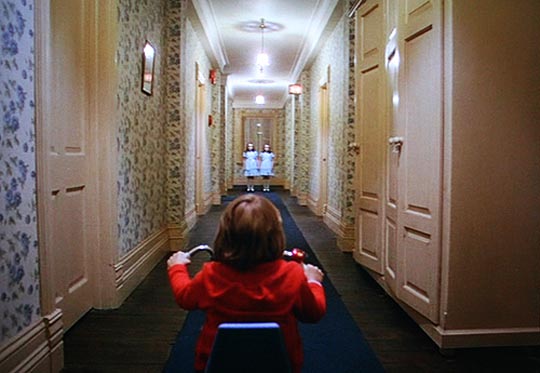
But, judging by the cool intellectual rigour of his previous work, the supernatural element would appear to be completely alien to his sensibilities. Indeed, co-writer Diane Johnson comments in one of the disk’s supplements that the issue of “how real the supernatural is” was a major concern during the writing. Kubrick was more interested in the psychological dynamics of the family in isolation, so in the end they “just had to accept inconsistencies”. But that admission goes a long way towards clarifying the film’s failure. The supernatural is integral to King’s story. Of course, you could easily tell the story of a family who undergo the stresses of isolation which cause all their inherent weaknesses and neuroses to rise to the surface; the story of Jack Torrance and his family could be handled as a purely realistic psychological thriller. But Kubrick and Johnson were either unwilling or unable to go that far in their adaptation (it would have completely offended the book’s fans), and so they ended up with an adaptation which was neither one thing nor the other.
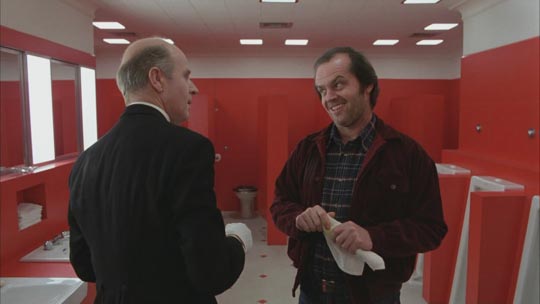
Some critics actually read the film purely on that psychological level, but in order to do that you have to ignore too many signs that there’s something more (something “trashier”) going on. Starting, of course, with Danny’s imaginary friend Tony who tells and shows him things, things which are undeniably clairvoyant. Then there’s the telepathic link Danny immediately experiences with the Overlook’s head chef, Dick Halloran. And his encounters with the ghosts of Grady’s murdered daughters, and his visions of their slaughtered bodies. In the film’s narrative, none of these things can be dismissed with some rational explanation, as just possibly you could explain away Jack’s encounter with the ghostly woman in room 237 (and believe that he had really inflicted the bruises on Danny’s neck himself – we’ve already seen enough signs of violence in him to accept that he might have attacked his son).
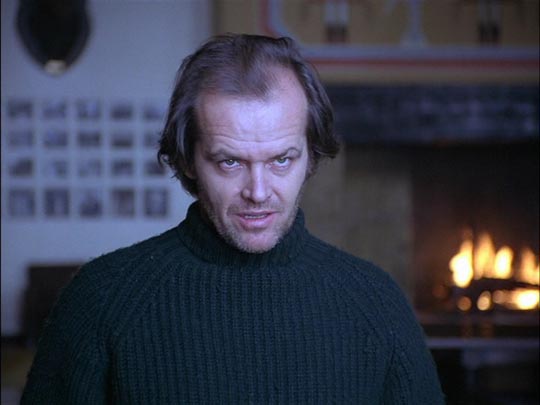
And of course, Jack’s increasing interactions with Lloyd the bartender and the party-goers in the Gold Room could simply be delusions. But then, during the climax, as Jack stalks his wife and son, Wendy herself also encounters a pair of ghosts. So, Danny’s and Wendy’s experiences make it impossible to discount the reality of the supernatural; it’s not all just happening in Jack’s head. So it becomes frustrating that Kubrick keeps pulling back from this element. One of the oddest moments, particularly to someone familiar with the novel, is the glimpse we get of a large scrapbook of news clippings as Jack sits at his desk typing. This is the history of the Overlook which he finds (in the novel) tucked away in the furnace room, a collection of accounts of violence, murder, perversion which have marked the hotel as a sick place since it was first opened in 1907. In the novel, this scrapbook provides all the details which shape Jack’s “hallucinations”; in the film, it’s ignored and yet placed plainly in view – like the supernatural elements themselves, something which Kubrick never comes to terms with.
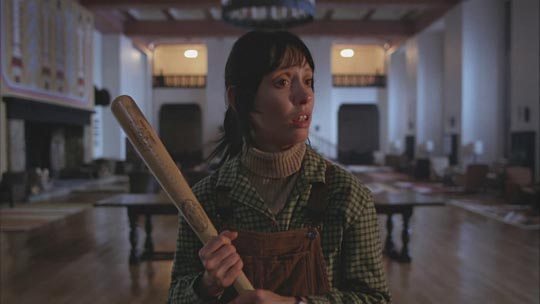
Perhaps the director’s greatest discomfort with the source material is the character of Halloran (one of King’s sometimes embarrassing “magic black people”). Halloran, wintering in Florida, gets psychic messages from Danny, telling him that things are going bad. So he flies back to Colorado and makes his arduous way into the snowbound mountains. These scenes are the clumsiest in the film, a concession to the novel’s plot which repeatedly interrupt the tension of what’s happening in the hotel. In the book, Halloran arrives and is attacked by Jack, seriously injured, but he survives, his appearance distracting Jack and assisting in Wendy and Danny’s escape. In the film, after spending an inordinate amount of screen time in getting Halloran to the hotel, Kubrick has Jack kill him immediately with an axe as if taking out his own frustration at having had to include the character. Although there may be another reason: despite Jack’s violent rampage, he actually never physically harms either Danny or Wendy, so Halloran’s brutal murder may be seen as a necessary pay-off of the film’s tension, a violent sacrifice to audience expectations.
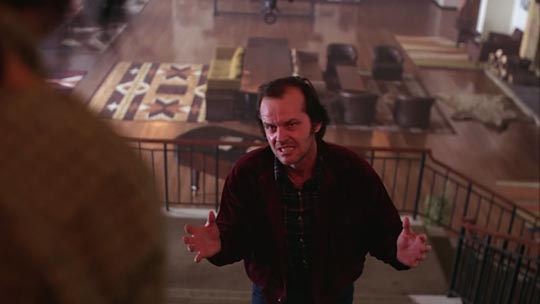
Finally, given Kubrick’s conflicted attitudes towards the supernatural, the film ends on an arbitrary and narratively incoherent note. What exactly is that last dolly in to the photo on the wall supposed to mean? So Jack Torrance was a partying guest in the Overlook back in 1921 – he’s “always” been one of the haunted place’s inhabitants? This is a meaningless gesture, seemingly something Kubrick felt he needed to do to satisfy some generic requirement, an echo of Polanski’s ambiguous final shot in Repulsion, where a photograph hints at the roots of the protagonist’s madness. But in the context of The Shining, it simply doesn’t make sense.
The Bad and the Good
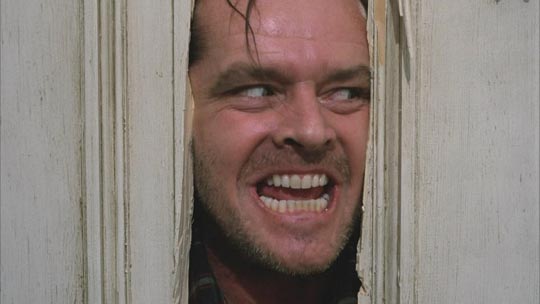
So these are all the things which leave me frustrated and dissatisfied with the film as narrative. In addition, there’s the issue of casting, which seems to have failed Kubrick here. Could anyone really believe Jack Nicholson and Shelley Duvall as a plausible couple? While Nicholson rampages through the film, revealing his madness right from the first moments in the interview scene, starting somewhat demonic and escalating steadily from there, Duvall’s big-eyed simpering weakness quickly becomes debilitating neurosis (a result of the director virtually torturing her throughout the production). There’s something almost cartoonish about both characters, pushing the film towards absurdist comedy rather than horror. And yet Kubrick manages to get a remarkable performance from 6-year-old Danny Lloyd as Danny, the most convincing character in the film; the subtlety and nuance of that performance make the two adults seem more uncontrollably overwrought.
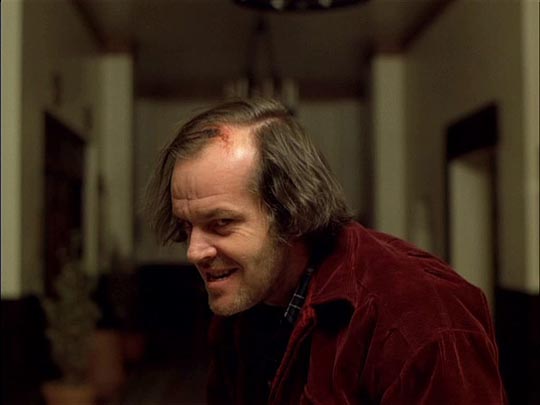
Kubrick’s attitude towards women was often problematic, exhibiting little sympathy for often abused characters (Charlotte Haze, the writer’s wife in A Clockwork Orange, Lady Lyndon), but there’s something almost perverse about pitting Olive Oyl against Jack Nicholson’s demon in The Shining. Duvall’s Wendy is an endlessly jittering child-woman, incapable of defending herself against her husband’s increasingly abusive aggression, and unable to defend her child – Danny is pretty much on his own when Jack goes off the deep end. Her neurotic weakness offers little dramatic opposition to Nicholson’s mania, and in the end it’s Jack’s own irrationality which defeats him.
And yet … and yet … once I start watching The Shining, I’m hooked and its 142 minutes breeze by. Kubrick’s sense of space and (thanks to the invention of the Steadicam) his ability to move through it give a life and a scale to the vast hotel sets (superbly designed by Roy Walker and photographed by John Alcott) which epitomize his obsession with fragile human beings lost in a universe too large to comprehend. Despite his ambivalence towards the supernatural, his camera manages to convey the immanence of forces which can reach out and possess and destroy those weak individuals who wander through its empty spaces. So while the film is a narrative mess, it succeeds powerfully on a visual level with some of Kubrick’s most accomplished image-making.
And there are individual moments which rank with the best in the director’s work. The scene in which Wendy discovers what Jack has actually been writing is one of the most obvious, but for me the finest scene in the film is the one in which Danny discovers his father sitting catatonically on the bed in their apartment and tentatively seeks reassurance that Jack won’t harm him or his mother; this is the subtlest bit of acting by Nicholson in the film, a man struggling against his own encroaching madness to find himself again, if just for a moment, to acknowledge his responsibility to the vulnerable child who looks to him for protection. It’s the most chilling scene in a film which never quite seems to find the right way to express the horror at its core.
Comments

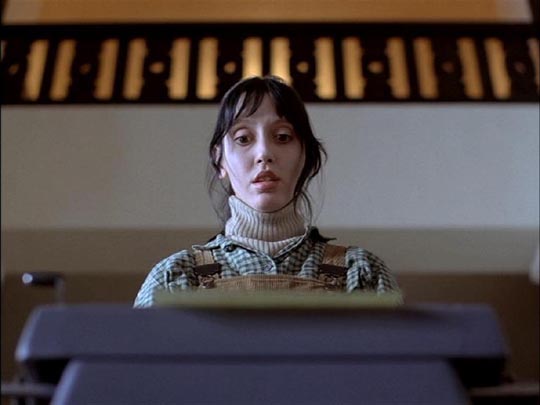
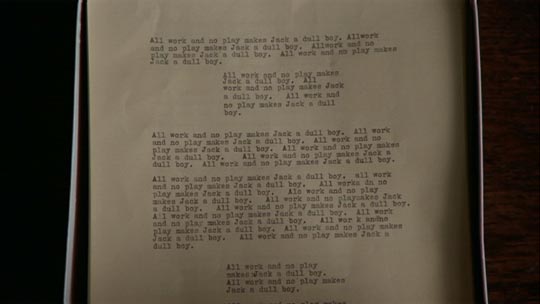
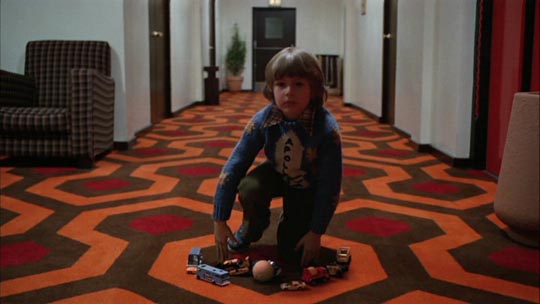
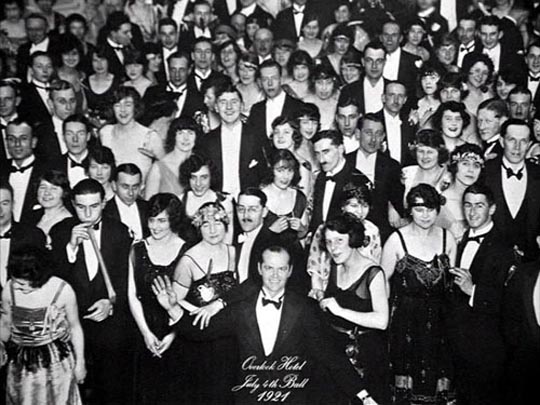
“The Shining” and “Eyes Wide Shut” are my least favorite from my favorite director.
But has any director ever produced such interesting least favorites?
I tend to agree … though I’d probably take either of them over Spartacus!
Great WEBSITE!! Nice work.
It’s funny how filmmakers always have an opportunity – when executing helicoptor shots – to adopt a realism style – and at least hold a shot for longer than 3 seconds. It blows my mind how incompetent filmmakers are – I mean, Kubrick has basically released his secrets – and there is no better way to film… than to try and keep things as real as possible. Jim Morrison had a great quote : “The misperceptions of reality are most eloquently expressed in film.” Not so much with Kubrick (and Van Sant did a good job with this in “Last Days.”) But you should check out Gajonka film – it gets into the secrets that are behind the big studios, and it takes film to the next level. Keep up the great work – you made a new fan today. Deadline is a good site, too. The girl who runs it is a genius.